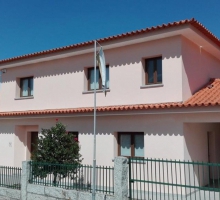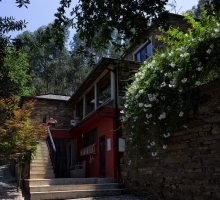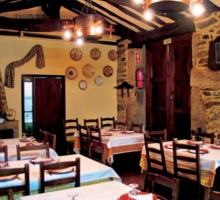The Gralheira d’Água corresponds to a residual relief of quartzite, dating back to the Arenigian (480–470 million years). This quartzite is the result of the deposition in a shallow marine environment, preserving several evidences of the living beings activity (ichnofossils), such as the evidences of Cruziana resulting from the activity of arthropods. Besides this, the place is enhanced by the presence of a Roman “fojo” (cave) used for the gold exploration. The gold mineralization existing in the Arouca territory fall within the mining district of Baixo Douro, and continues through tens of kilometers from Esposende to Castro Daire, being associated to an important geological structure known as “Anticlinal de Valongo”. The “fojo” of Gralheira d’Água is an important example of this mining exploration occurred since the Roman occupation in the Iberian Peninsula. From the cultural point of view, this geosite was, according to the local popular tradition, associated to the Moors. A century ago, the monographer Madureira has described this as a place “where there are big caves, which people say were built by the Moors with the objective of extracting metal, and this seems to true”. From this place, it is also possible to observe the “Pedreira do Valério” (Valério’s quarry), as well as the different lithologies emerging in this region. You’ll have an extraordinary view of 360 degrees. Oporto is at NW, Entre-os-Rios and Penafiel are at N, Canelas and Montemuro Mountain at NE, S. Macário and S. Pedro do Sul Mountains at E and Arada and Freita Mountains at S.
Location: Arouca
Location: Arouca




